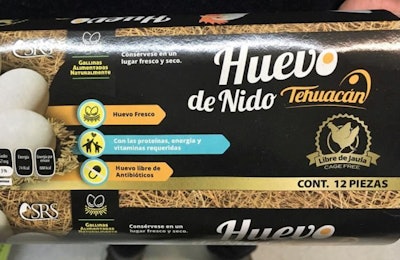
In my blog last week I said that the price of alternative eggs is very high in Mexico. Although I should not have generalized about cage-free eggs in the headline, the truth is that I got favorable comments, and also disagreement, particularly with regard to the position of Humane Society International (HSI).
Yes, indeed, nothing is static and people change. It is said in a study done in Mexico – and shared by HSI – which, like in the European Union, Mexicans are concerned about animal welfare and ethical, sociological and economic implications. The study was published last month in Meat Science. The methodology design seems correct (I'm no expert in this area). However, I think that sometimes the questions we may have can be tricky. For example, if I ask whether animals should eat well and stay healthy, who would say no? Surely, the result is an overwhelming yes.
As I said in a previous article (in Spanish), based on an interview with Dr. Hector Cervantes, president of AAAP, most times consumers, because of the anthropomorphism that apply to animal welfare issues, believe that something is good but it is not necessarily good for the animals. Or for oneself. We are mixing human ethical values – such as happiness of hens – with the price of eggs.
Let's talk about science. In the "Laying Hen Housing Research Project” study published in March 2015 by the Coalition for Sustainable Egg Supply, it is stated that "physiological data did not demonstrate the presence of acute or chronic stress in any housing system” that was studied (whether conventional, enriched colony or cage-free aviary). In addition, clearly it states that operating costs per dozen eggs are substantially higher in the aviary and only slightly higher in the enriched colony, compared to the conventional system. Because of the higher feed, labor, pullet, and capital costs, the aviary system was 36 percent more expensive than the conventional system, while the enriched colony is 13 percent more expensive.
In my past blog, I was talking about who is taking the most of the income when selling alternative eggs. Not the producers. Are middlemen, selling at cost, in the best case, an egg of the same quality and nutritional value?
Now, if the egg is the same: Are Mexicans really willing to pay 30 percent or 300 percent more? It is a long way from words to action. They may say yes, but we have to see the reaction within the supermarket. As I said before, the market demand will be the driving factor. What do you think?

















